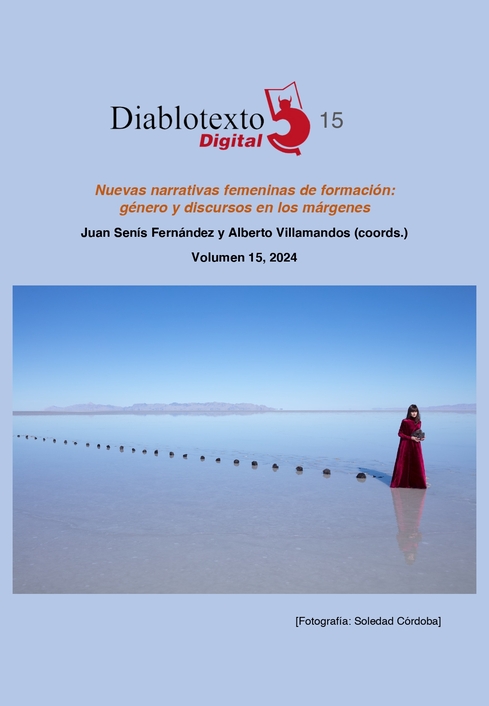New femenine narratives of formation: gender and discourses on the margins
DOI:
https://doi.org/10.7203/diablotexto.15.29055Keywords:
Narrative, Gender, Bildungsroman Abstract
Abstract
Presentation of the monograph "New female training narratives: gender and discourses on the margins", coordinated by Juan Senís Fernández and Alberto Villamandos.
 Downloads
Downloads
 References
References
Ahmed, Sara (2014). The cultural politics of emotion. Edimburgo: Edinburgh UP.
Boes, Tobias (2012). Formative Fiction. Nationalism, Cosmopolitanism, and the Bildungsroman. Nueva York: Cornell UP.
Carandel, Zoraida; Naval López, María Angeles (2016). La transición sentimental: literatura y cultura en España desde los años 70. Madrid: Visor.
Ciplijauskaité, Biruté (1988). La novela femenina contemporánea 1970-1985: hacia una tipología de la narración en primera persona. Madrid: Anthropos.
Martín Gaite, Carmen (1987). “La chica rara”. Desde la ventana. Madrid: Espasa Calpe.
Pampler, Jan (2015). The History of Emotions. An Introduction. Oxford: Oxford UP.
Pratt, Annis (1981). Archetypal Patterns in Women's Fiction. Bloomington: Indiana UP.
Ros Ferrer, Violeta (2020). La memoria de los otros. Relatos y resignificaciones de la Transición española en la novela actual. Madrid: Iberoamericana.
Downloads
Published
How to Cite
-
Abstract131
-
PDF (Español)59
Issue
Section
License
Licencia de reconocimiento de Creative Commons “Reconocimiento - No Comercia l- Sin Obra Derivada
Authors who publish with this journal agree to the following items:
The authors will keep their copyright and guarantee the journal the right of first publication of their work, which will be simultaneously subject to the Creative Commons license that allows third parties to share the work indicating its author and its first publication in the journal. The authors may adopt other non-exclusive license agreements to distribute the version of the published work (e.g., depositing it in an institutional telematic file or publishing it in a monographic volume), with an acknowledgment of its initial publication in this journal. The authors are allowed and encouraged to disseminate their work through the Internet (e.g., in institutional telematic archives or on their website) before and during the submission process, which can produce interesting exchanges and increase citations of the published work. (See Effect of Open Access)




